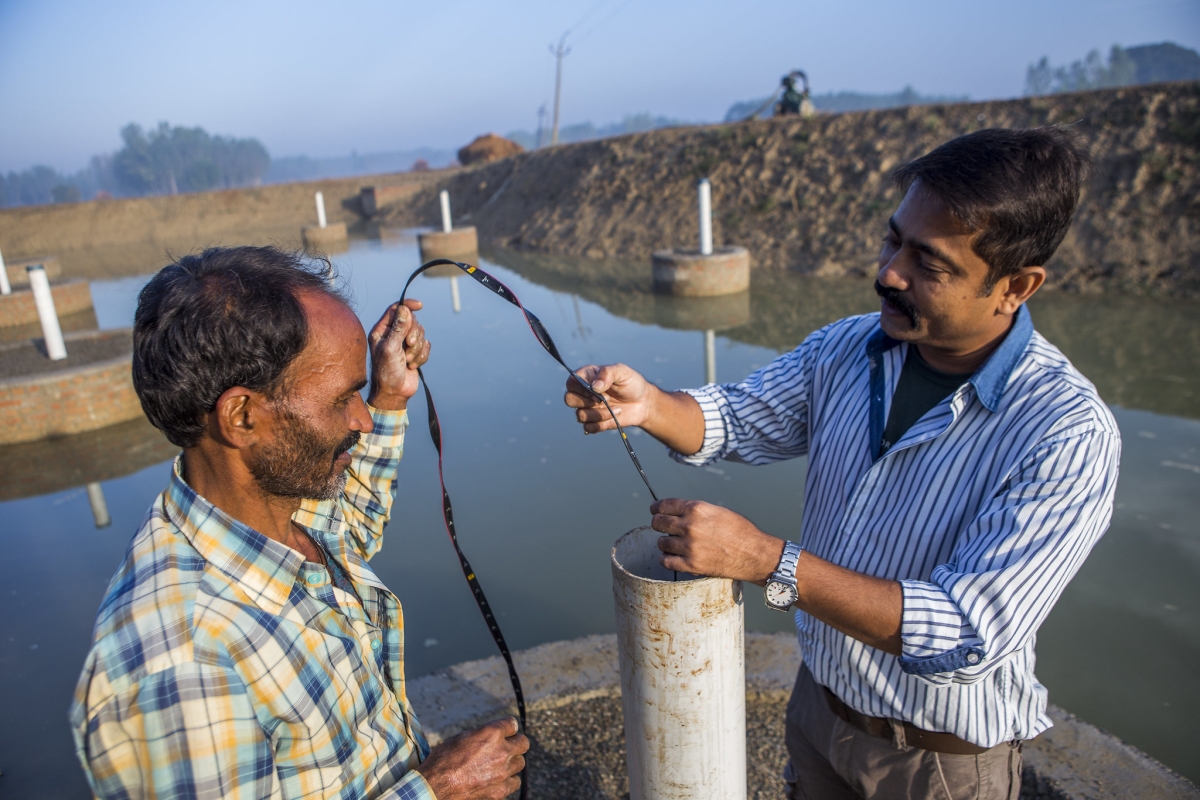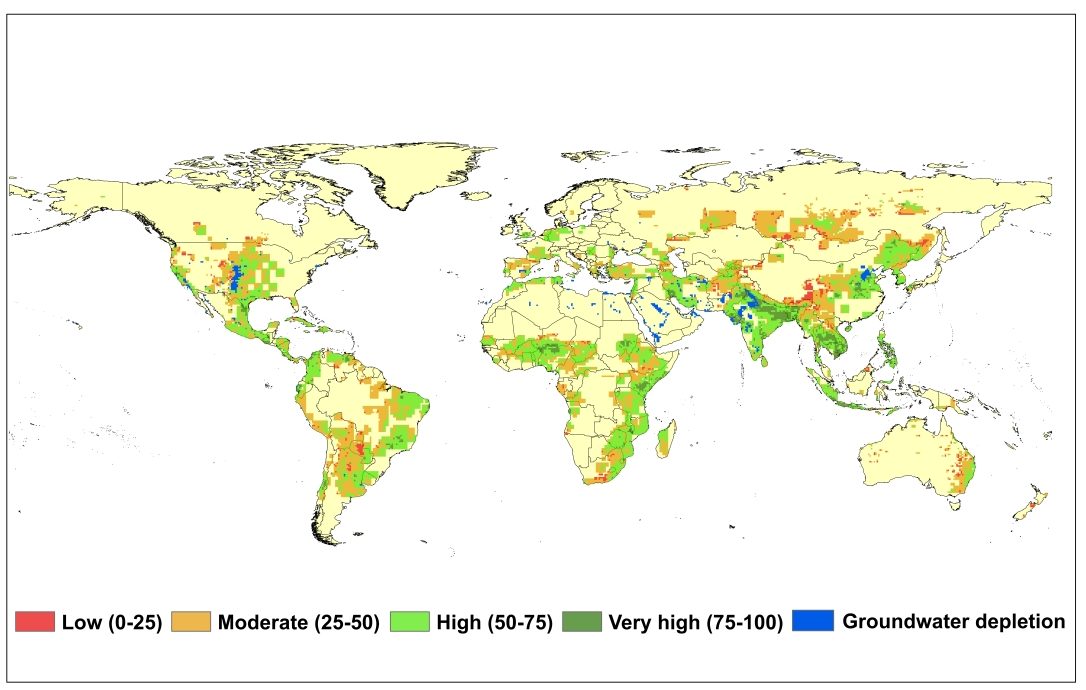By Faiz Alam, Researcher – Water Resources/Agricultural Water Management (IWMI) and Paul Pavelic, Senior Researcher – Hydrogeology (IWMI)

IWMI has conducted a global assessment of a means to better capture and store water from flooding for use in times of drought for the first time. A new IWMI Research Report titled, Underground Transfer of Floods for Irrigation (UTFI): Exploring the Potential at the Global Scale, identifies opportunities to use natural groundwater storage to provide more reliable water supplies, particularly in areas of water scarcity.
Of all natural disasters, floods and droughts are by far the most destructive, with annual costs globally in the last decade averaging US$ 40 billion per year. Under a ‘business as usual’ scenario the prospect of managing extremes in water availability does not look promising. By 2050 the UN’s World Water Development Report 2019, estimates that half the world’s population will regularly face periods of severe water stress while the United Nations University estimates the number of people affected by floods each year could reach 2 billion. There is urgent need to establish additional practical and scalable solutions to better manage water extremes to safeguard people at-risk from flood and droughts, and economies whose vulnerabilities are being exposed by Covid-19.
What if we could better capture and store regularly occurring high surface water flows for use in times of drought? While surface storage in dams has been used extensively and received much attention, the potential for harnessing the natural storage of aquifers has been explored less. This storage – similar to dams but typically larger and better distributed – can be used to capture excess surface runoff and make it available during dry periods, thus bringing about multiple social and environmental co-benefits in the process. Underground Transfer of Floods for Irrigation, or simply ‘UTFI’, is one means by which this may be achieved in landscapes that are flood and drought prone and have high dependency on groundwater for agriculture.
A global assessment of the potential for UTFI has been conducted for the first time using datasets on flood and drought frequency, economic losses and mortality along with available groundwater storage. The results show that areas of high potential for UTFI cover about 11% of global land area (1,580 Mha) which is home to half the world’s population (3.8 billion) and 40% of all croplands (622 million hectares). Areas of high UTFI potential include 197 cities with populations greater than 0.5 million people and also suggests scope in urban and peri-urban areas.
 Global map of UTFI suitability
Global map of UTFI suitability
South Asia, East Asia, Southeast Asia and Sub-Saharan Africa are examples of regions broadly identified with the highest UTFI potential; yet within any given country or region the potential may contrast greatly. A preliminary economic analysis in several river basins with good UTFI potential in Africa and Asia shows the benefits from flood mitigation and enhanced crop production are high if UTFI implementation is distributed on a sufficiently large scale.
What’s Next?
The maps and other information produced through this work highlight significant opportunities for UTFI in countries and basins. The next step is to move toward development on the basis of investigations that establish technical, social and economic feasibility. Experience from India is most advanced as pilot testing by IWMI and partners including ICAR-CSSRI, LNRMI and TERI has provided clear insights into the technical performance of UTFI interventions and the institutional challenges for scaling and sustaining UTFI. Furthermore, hydrologic modelling assessments on a basin scale highlight the magnitude and distribution of small-scale interventions needed to capture, store and deliver water to protect against floods and to address growing groundwater depletion.
Ultimately, this work provides evidence and guidance to policy makers and practitioners at the global scale to tap into new nature-based ‘underground’ solutions that reduce the risks associated with increasingly variable water resource availability to buffer shocks and thereby help protect vulnerable communities against floods and droughts. In so doing, UTFI can contribute positively towards fundamental development issues such as food and water security, as well as a broader suite of issues related to climate change adaptation and disaster risk reduction that are enshrined in SDG 13 and among the highest policy priorities of almost 200 countries committed to the 2016 Paris Climate Agreement.
This research was carried out as part of the CGIAR Research Program on Water, Land and Ecosystems (WLE) and supported by Funders contributing to the CGIAR Trust Fund.

